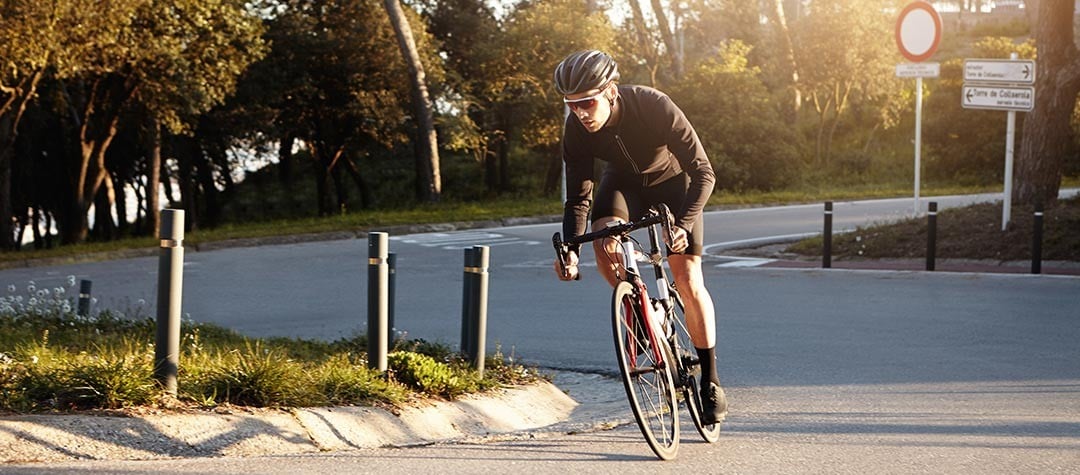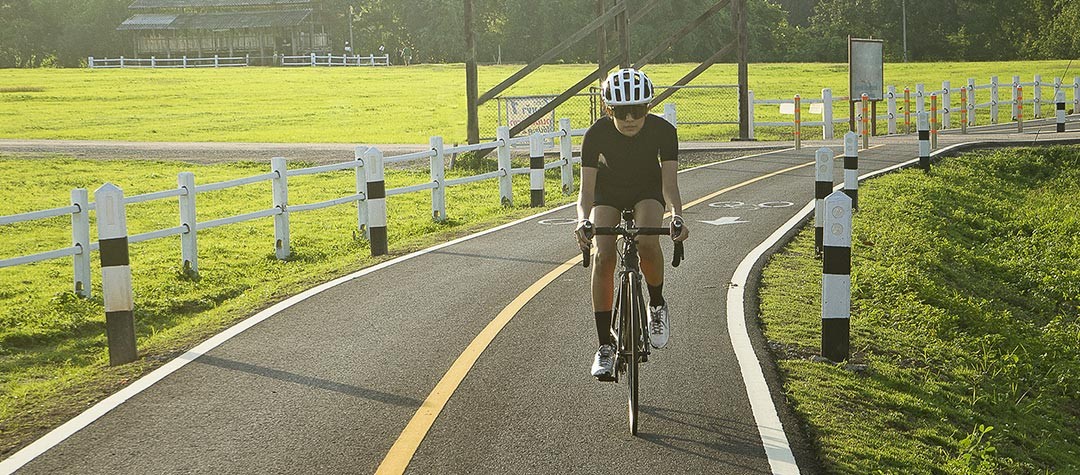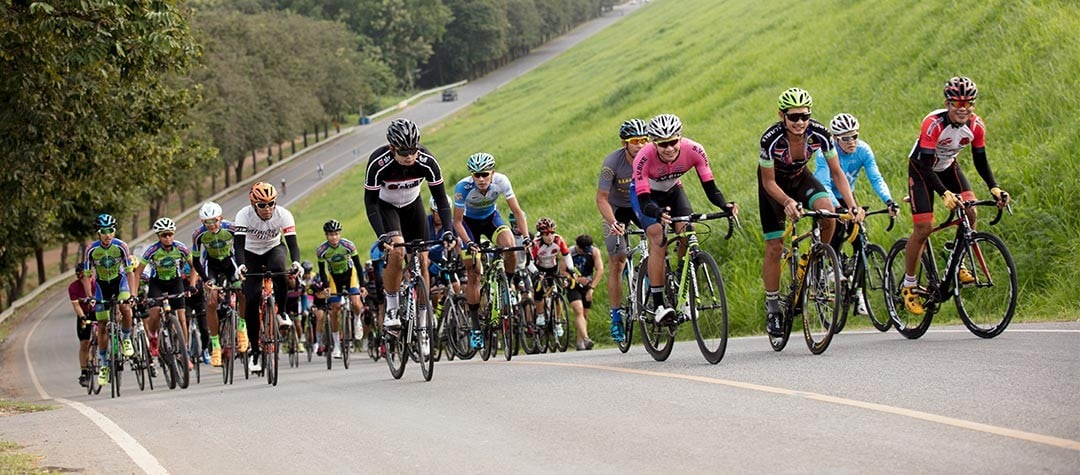There are a number of common cycling errors that new riders typically make when they start out. Make sure you avoid these cycling mistakes.
Whether you're new to cycling or a dyed in the wool veteran with thousands of kilometres in the legs, we all make mistakes. It’s the way we learn, the ‘experiential learning cycle’ as it were. So, before you make any more have a look at these common cycling mistakes, hopefully they’ll help you out and may even improve you as a rider.
1. Saddle height
Aside from soft tyres, saddle height is one of one main reasons you may be inefficient as a rider , as a saddle placed too high or too low means that the power from the legs won’t be delivered properly. As a guide for getting your saddle height right, do the following:
- Ride along with your heel on the pedal.
- When your leg is at the very bottom of the pedal stroke your leg should be almost straight, but not quite.
- Set your saddle at this height.
- Then when riding with your foot in the ‘normal’ position (ball of big toe over centre of the pedal axle) you should achieve an efficient pedalling action, at an ideal height.
- Don’t be afraid though to adjust a little higher or lower from this point, just to fine tune things if needed.
- You should still be able to touch the ground with your toes either side of the bike whilst sat in the saddle.
2. Not fuelling for a ride correctly
For runners the commonly used phrase ‘hitting the wall’ refers to the point when the body runs out of fuel/energy and grinds to a halt. Cyclists generally refer to this occurrence as the ‘bonk’ and it is something that will have happened to most riders at some point, even the pros. When heading out on a ride, take a bit more food than you actually need and perhaps two bottles, especially if riding in more remote areas where there’s little chance of finding somewhere to get supplies. Plan ahead as having some food/drink in reserve is better than running the risk of bonking.
3. Braking in corners
This is very common cycling error, especially amongst new cyclists. The safest, most efficient technique is to brake before the corner, not actually braking as you are on the corner, as doing this with your bike banked over at an angle can result in the bike locking up and you losing control and crashing.
The safest, most efficient technique is to brake before the corner, not actually braking as you are on the corner.
To brake safely you should do it on the approach to a bend, making sure you brake gently, but enough to slow you to the point where you can safely negotiate the corner. Remember brake earlier in wet conditions as the stopping distance will be greater, especially for those of you with caliper as opposed to disc brakes.
4. No spares or tools
When heading off on a ride you need to ensure that you’ve packed a few essential spares and tools that could get you home should you have a problem. As a guide I always take with me the following items that can be stashed in a saddlebag under your saddle or distributed in your pockets:
- 2 x inner tubes
- Tyre levers
- Patches (instant stick on type are best)
- Mini Pump (or CO2 inflator)
- Multi tool (ideally with chain link extractor)
5. Grabbing hard on the brakes
When needing to slow don’t just ‘grab’ the brakes hard. Braking should be done in a controlled manner so the weight distribution of you on the bike remains as stable as possible. The dangers of sudden braking include loss of control and stability and in some cases can result in you going flying over the handlebars. To ensure safe braking you should look well ahead, anticipate and brake steadily using both front and rear simultaneously, with slightly more emphasis on the front brake.
6. Riding too far, too hard, too soon
Know your ability and ride within it. There’s nothing wrong with aiming high but the key to achieving your ambitions is to build up steadily. Cycling is a hard sport but wonderfully rewarding. Don’t knock your confidence by doing too much too soon, as good consistent steady training is what will bring you progress rather than trying to hammer it from the off.
7. Poor bike maintenance
Again, this is basic info but of importance both from a convenience point of view and from a safety perspective. Get into the habit of regularly checking your bike and keeping it maintained, especially if you don’t want the embarrassment of having to be rescued from the roadside. Pay particular attention to the brakes, gears, handlebars and tyres and regularly clean and lubricate the chain. It makes sense to get your bike serviced at regular intervals, especially if you are unsure or in doubt regarding a more complex part of the bike. The best advice is not to chance it.
8. Unsuitable clothing
This is yet another element of cycling that you need to plan for, as otherwise you could find yourself miserable on a ride or even worse, in extreme difficulty. Make sure you check out the weather forecast for the entire duration of your ride. Think about the length of the ride you are planning and see if the weather conditions are likely to be changeable.
In colder conditions it’s best to slightly overdress than under dress.
In colder conditions it’s best to slightly overdress than under dress as you can always take off layers if you are too warm or unzip to let cool air in. Conversely, if heading out in just shorts and short sleeves and you come across a rainstorm, for example, your body temperature can fall rapidly, so always pack a windproof/waterproof layer and or gilet that can be stowed into your pocket. This becomes even more important if you are riding in hilly terrain with drastic elevation change where you could be very warm on the climb, but freezing on the downhill due to windchill.
9. Not using gears efficiently
Gears help improve the efficiency of your power over different terrain, so make sure you use them correctly. The majority of bikes will have upwards of 20 gears, giving a very wide choice of ratios to suit all abilities. It may take a while to discover what gearing works for you but for sure you shouldn’t be pedalling so furiously that your body starts to rock from side to side whilst doing 10 mph on flat stretch of road. At the other end of the spectrum you shouldn’t be trying to turn over a large gear so that every pedal revolution is like doing a weights session and your knees start to hurt.
As a guide, it is suggested that on the flat you should aim to maintain a cadence of 70-90 rpm (pedal revolutions per minute). Make sure you shift down to the easier gears for climbs and shift up to the harder gears for the flatter downhill sections of road. This may seem like basic stuff but believe me it’s more common than you realise if the amount of people I see struggling in the wrong gear is anything to go by.
10. Squeaking chain
Not only can a squeaking chain be infuriating to you and your fellow riders, it also won’t be doing your bike chain or cassette (cogs on the rear hub) too much good either, as the sound is friction wearing out your components. So, pop on some light oil or chain lube, (there’s a wide variety available for wet and dry riding) wipe off the excess and away you go! No more squeaks and your chain (and other components) will be ever grateful and will last a lot lot longer than they otherwise might have done.















